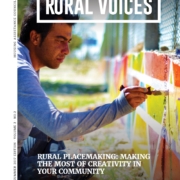HAC Comments on Community Investment Focus on Capacity Building and Capital Access
Several federal government agencies recently formed an Interagency Community Investment Committee (ICIC), focused on the operations and execution of federal programs that facilitate the flow of capital and the provision of financial resources into historically underserved communities, including communities of color, rural communities, and Tribal nations. The ICIC requested public input on ways the agencies can promote economic conditions and systems that reduce racial disparities and produce stronger economic outcomes for all communities. According to the request for comment, responses may be used to inform ICIC’s future actions to improve the operations and delivery of federal community investment programs through stronger federal collaboration. The committee is composed of representatives from the Department of the Treasury, Small Business Administration, Department of Commerce, Department of Transportation, Department of Housing and Urban Development, and Department of Agriculture.
Key Takeaways
- Support capacity building for local organizations embedded in their communities.
- Provide equitable access to capital for rural America.
- Address rural needs, particularly in persistent poverty areas, directly.
- Accelerate interagency coordination and sharing of best practices.
- Improve data and information accuracy and availability.
Read HAC’s comments, submitted on December 19, 2022. Other comments are posted here.





